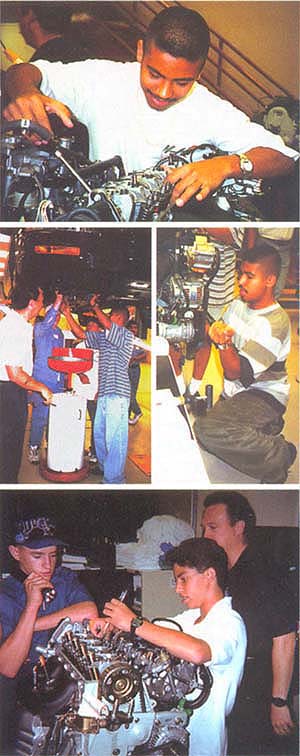All Issues
National trends inform workforce research
Publication Information
California Agriculture 56(2):50-50. https://doi.org/10.3733/ca.v056n02p50
Published March 01, 2002
PDF | Citation | Permissions
Full text
IN this series of reseaich reports, UC's 4-H Center for Youth Development and 4-H youth development advisors provide scientific underpinnings for the development of workforce preparation programs that will meet the needs of California's diverse and growing population of youth. Several educational, economic and social trends will have implications for American youth as they prepare to enter the world of work at the beginning of the 21st century.
Qualified workers. The American labor force seriously lacks qualified workers. The 1991 Secretary's Commission on Achieving Necessary Skills (SCANS), prepared by the Department of Labor, identified the characteristics a person needs in order to be productive in today's global economy, including foundation skills (such as reading, writing and math) and workplace competencies (such as interpersonal skills, communication and using technology effectively). Unfortunately, more than half the youth leaving high school lack these basic skills and competencies. Consequently, employers are finding it necessary to import employees or export jobs (SCANS 1991).
In 1997, Joseph Stiglitz, chairman of the President's Council of Economic Advisors stated: “In the 19th century, the frontier of America was moving from agriculture to manufacturing. Today the frontier is going from manufacturing to services and technology, much of which can be exported.” In addition to technology, qualified teachers, nurses, physical therapists, accountants and skilled craftsman are also in high demand (Bureau of Labor Statistics 1999; Greenwald 1997). At the same time, entry-level positions generally require more sophisticated skills, and high school graduates are seldom able to advance to a position that provides a comfortable living wage (Stevenson et al. 1998).
Earning power. The disparity in earning power between workers of varying educational levels continues to grow. Between 1973 and 1995 the real hourly wages of workers without a high school diploma declined by over 23%, with a high school diploma by more than 14%, and with some college education by 13%. At the same time the earning power of college graduates and those with advanced degrees increased 4.3% and 12.1%, respectively (Stevenson et al. 1998).
The 4-H National Center for Workforce Preparation has formed several partnerships with industry to prepare youth for future employment. California 4-H members from Merced attended a 5-day hands-on training and mentoring program at the Honda Technical Training Center near Stockton. Cesar Aguilar, top and center right, and Paul Mahacek, bottom (center), learned how engines operate, as well as the chemistry of batteries, and combustion, physics and metrics. Photos courtesy of Richard Mahacek.
Specialized training. Due to tightening budgets and increasing emphasis on college preparation, vocational training in high school has greatly diminished (the Regional Occupational Program being a wonderful exception). The federally funded School-to-Work or Career Initiative has helped to link academic learning to applications in the workplace, but the major emphasis is still on college preparation. In contrast, in countries such as Japan and Germany there is a tradition of tight linkages between secondary schools and the worlds of work and college (Stevenson et al. 1998). These types of alliances provide young people with opportunities to understand how academic experiences are relevant to their future work as well as to develop important skills and competencies.
Nationwide response. Two major initiatives have been put forth on tha national level in recent years to address these problems. First, in 1996 the Cooperative State Research, Education and Extension Service of the USDA instituted the National Workforce Preparation Initiative in order to “marshal the extension, teaching and research resources of the land-grant university system to address workforce preparation throughout the country.”
Second, under the direction of the National 4-H Council, the National Center for Workforce Preparation was established in 1996. The center developed a model based on SCANS and launched a multifaceted program, called Preparing Youth for Employable Futures. The center has partnered with a variety of major corporations to offer mentoring, internship and apprentice programs as well as grants to support local programs.





